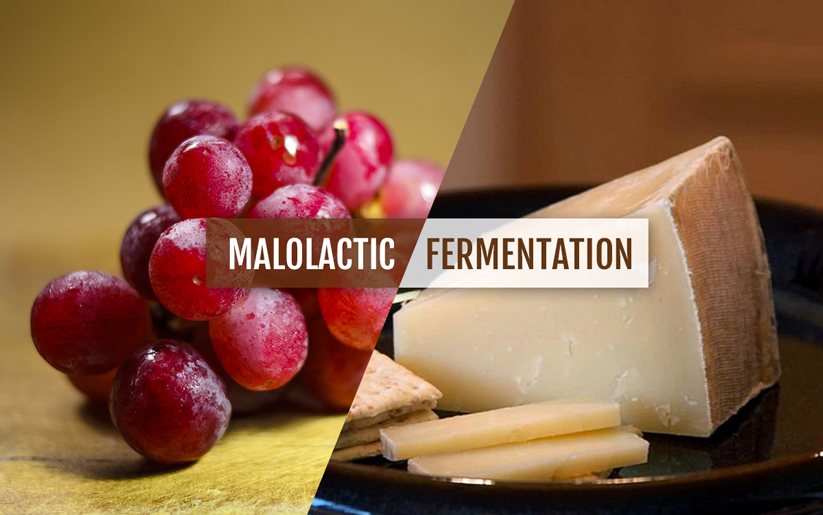If you are a wine lover, you would have come across the term malolactic fermentation (MLF) at some time. That time could be going through the tasting notes of a sparkling wine or researching a ‘buttery’ Chardonnay. Let’s discuss the malolactic fermentation process and its role in winemaking, without getting too much into the technicality of it.
The first step of winemaking (after harvesting) is pressing. As the grapes are pressed, they result in must, a combination of juice, skins, seeds and stems (particularly in case of whole-cluster fermentation). This must contain malic acid, which has a tart/sour taste. Malic acid is essentially the compound that makes fruits taste sour. In a nutshell, malolactic fermentation is a desirable reaction wherein the malic acid in the grape must is converted into lactic acid. ‘Lact’ comes from a Latin word, meaning milk. Lactic acid is present in milk products like yogurt and is softer in taste than malic acid. If you ever had a ‘buttery Chardonnay’ or read a wine label that it provides a creamy mouthfeel, you now know that it’s the result of malolactic fermentation.
All in all, wines that undergo malolactic fermentation show a ‘softer acidity’. They provide a smoother and a fuller mouthfeel. That said, MLF may not always be desirable, which is why it is not carried out for all the wines. You would have heard about a buttery Chardonnay, but not a Riesling. This is because fruity and floral wines demand a firm acid line. Moreover, studies have also shown that malolactic fermentation decreases primary aromas. Pinot Noir seems to lose its berry characters post MLF.
Malolactic fermentation is usually performed after primary fermentation, i.e. as a secondary fermentation. However, it can run in parallel with the primary fermentation.
There’s only one way to find out if you like what MLF does to a wine, and that’s to actually try the one that has undergone it! There are so many ways a wine can be made, depending on the winemaker’s purview – why not try them all?

















Pingback: Unveiling the Mysterious Buttery Chardonnay | All About Australian Wines & Wineries | Just Wine Blog
Pingback: Cold Fermentation in Wine Decoded | All About Australian Wines & Wineries | Just Wine Blog